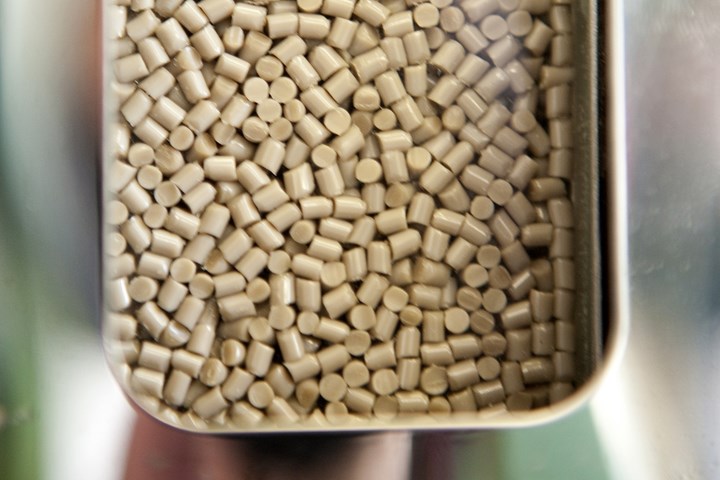High-Viscosity PEEK for Injection Molding and Extrusion
Evonik’s new Vestakeep 4500 PEEK boasts a higher crystallization rate and better flowability than the well-established Vestakeep L4000 G grade.
A high-viscosity PEEK material for injection molding and extrusion is the latest addition to the extensive range of high-performance Vestakeep PEEK products from Evonik, Parsippany, N.J. Vestakeep 4500 G reportedly exhibits high melt stiffness, which simplifies processing during extrusion. Its rapid crystallization shortens the cycle time in injection molding, and the components are easy to eject and exhibit good dimensional stability.

Evonik’s PEEK products range from low-viscosity to high-viscosity molding compounds, granules as well as powders, unreinforced as well as equipped with glass fibers and carbon fibers. Thanks to their high temperature and chemical resistance, and their high ductility, these specialty polymers can replace metal components to enable, for example, sophisticated lightweight construction applications.
The newly developed 4500 G grade complements the high-viscosity variants with a product that has a higher crystallization rate and better flowability than Vestakeep L4000 G, which is well known on the market. During processing, 4500 G also shows higher melt stiffness and better temperature resistance. Its inherent color is slightly lighter than the well-known molding compound. The combination of its properties makes 4500 G suitable for many applications.
Related Content
-
Scaling Up Sustainable Solutions for Fiber Reinforced Composite Materials
Oak Ridge National Laboratory's Sustainable Manufacturing Technologies Group helps industrial partners tackle the sustainability challenges presented by fiber-reinforced composite materials.
-
What's the Allowable Moisture Content in Nylons? It Depends: Part 2
Operating within guidelines from material suppliers can produce levels of polymer degradation. Get around it with better control over either the temperature of the melt or the barrel residence time.
-
Prices Up for All Volume Resins
First quarter was ending up with upward pricing, primarily due to higher feedstock costs and not supply/demand fundamentals.




